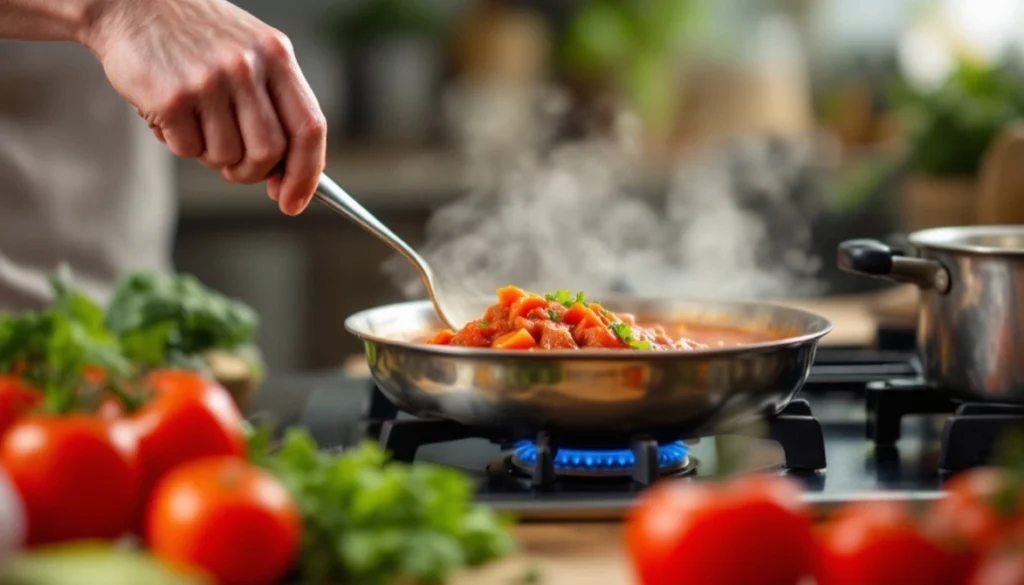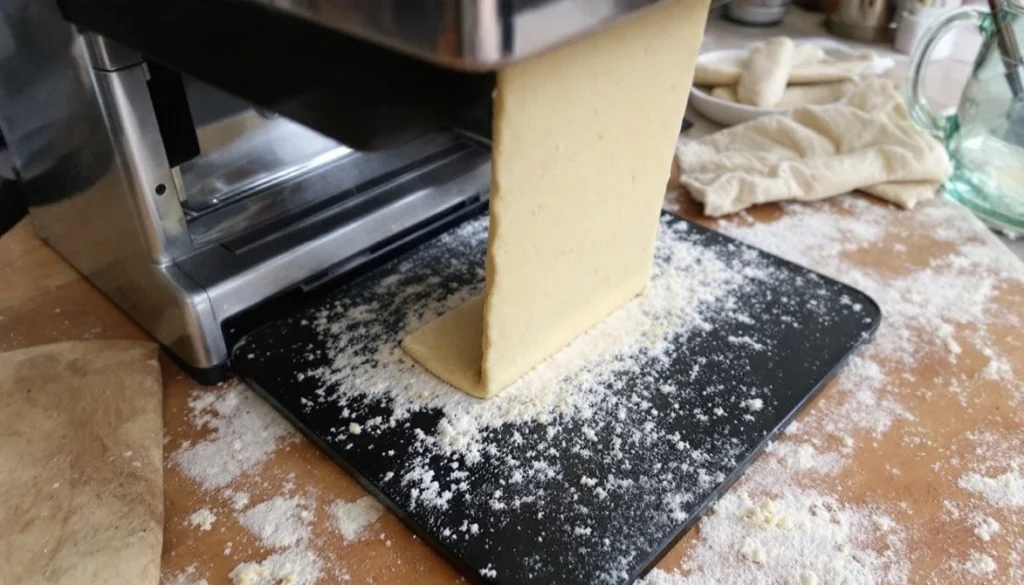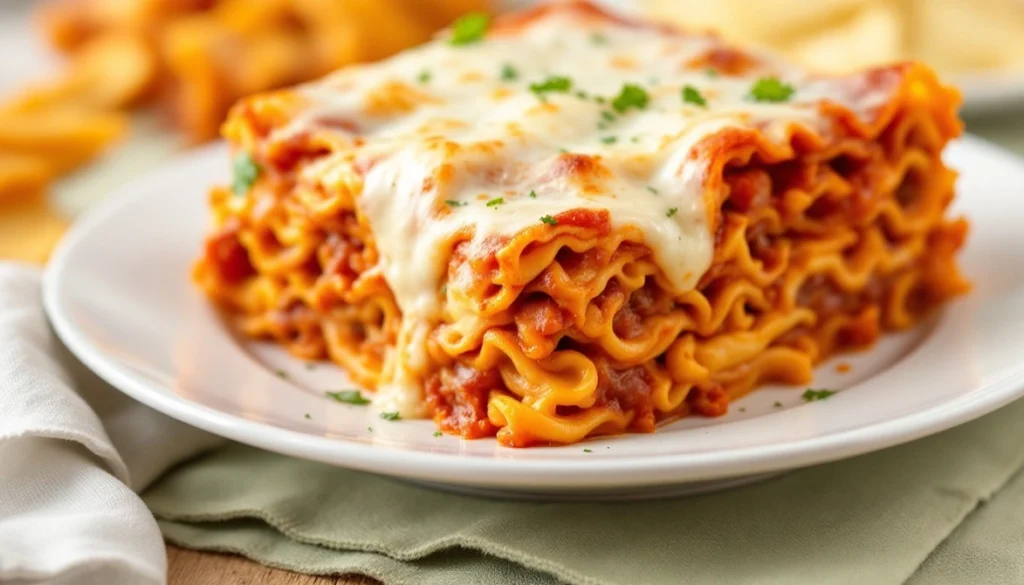Is the Bottom Layer of Lasagna Noodles or Sauce?
Lasagna is among the most well-loved dishes around the world. But deciding on what to serve first, the noodles or the sauce? It can be difficult. This guide will help you answer the issue. We’ll discuss traditional recipes, expert tips, and inventive methods to stack lasagna. Also, you’ll find helpful tips to ensure your lasagna is perfect each time.
Introduction to Lasagna Layering
What Makes Lasagna Special?
Lasagna is much more than it’s just a meal. It’s also a tradition as well as a comfort food and an emblem of cooking at home in its best form. With its delicate layer of pasta, creamy sauces and melted cheese, it’s a delight to people around all over the world. However, as easy as making lasagna seems, the process of making it may raise concerns about the method. A popular subjects is “Is the bottom layer of lasagna noodles or sauce?”
The appeal of lasagna is in its variety. Each cook has their own preferred method of layering and every variation is distinctive. Some adhere to the traditional Italian ways while others experiment with contemporary variations. No matter what you decide how you start your lasagna will set the tone for the rest of the dish. A solid base is crucial to success.

The debate: Noodles vs. Sauce for the Bottom Layer
A question like “Is the bottom layer of lasagna noodles or sauce?” is one of the most commonly asked by novices and veteran cooks. Making noodles at the beginning can offer the stability needed for a base. But, this technique can lead to that the pasta will stick to your pan and dry out in the baking. However using sauce as the first layer helps to solve these problems and adds flavor to the dish. Sauce provides a moist and tasty base that allows it to cook in a uniform manner.
The way that it is traditionally done, Italian recipes favor sauce as the primary ingredient. It helps prevent sticking, adds moisture, and makes sure that each bite is bursting in taste. However, some American recipes begin with noodles, especially when making an extra thick, sturdy lasagna. The choice is based on the preference of the cook as well as the type of lasagna that is being prepared, and the available tools for cooking, like non-stick cooking pans or noodles that have been pre-cooked.
Why the Bottom Layer Matters
The lower layer is more than just a starting point, it’s also the foundation that makes up the entire dish. It provides stability, helps avoid mess, and affects the texture and flavor and taste. A lasagna that is made with sauce will not be dry and stick to the dish. Furthermore, the sauce serves as a cushion that supports the noodles and fillings over it.
Making noodles at home can be productive If the cook is attentive to the smallest details, like making sure to grease the pan, and that the sauce is sufficient in thickness to bind the layers. This method, however, requires more effort and preparation. For those who want an easier, more foolproof method using sauce, starting with it is typically the best choice.
The Traditional Approach to Lasagna Layering
Traditional Italian Methods
In Italian cooking lasagna is about harmony. Each layer must be able to work to make a delicious dish. The most common top layer is usually an even layer made of the red sauce. This prevents lasagna from sticking to pan. This also makes it easier for the lasagna to bake even.
The sauce is the first ingredient to ensure that the lasagna stays damp. dry noodles could ruin lasagna, making it hard and chewy. Italians prefer their lasagna to be thick and tender. A base of sauce can help in achieving this. The use of noodles as the base layer isn’t as popular for traditional dishes.
The Role of Red Sauce as a Base Layer
Is the layer that is at the bottom of lasagna noodles sauce or lasagna noodles? Italian chefs often say sauce. The layer of sauce red provides a an excellent base for the lasagna dish. It keeps the dish from sticking and adds the flavor of every bite.
While the lasagna cooks as it cooks, the sauce melts into the noodles. This makes the lasagna delicious and soft. Traditional recipes typically make use of marinara or meat sauce as the base. Beginning with sauce will ensure the best texture and flavor. It’s an easy method to make your dish really enjoyable.
Modern and Regional Variations in Layering
American Style Lasagna: Thick and Hearty
In America the lasagna dish is rich and delicious. A lot of recipes start with layers of pasta. This adds structure to the dish and makes the lasagna simpler for cutting and serving. American-style lasagna usually has dense layers of meat and cheese, that require strong support from the bottom.
But, beginning with noodles can have a disadvantage. It may result in the bottom layer to stick. For this reason, a lot of cooks grease their pans or use non-stick baking dishes. Although it is different from Italian practices, this technique can make a dish more filling.
Unique Variations: Vegetarian, Vegan, and Gluten-Free Lasagnas
Modern variations on lasagna alter the way it’s served. Vegetarian as well as vegan variations usually make use of vegetables instead of noodles. In these dishes, sauce typically is placed at the bottom. It prevents vegetable from sticking, and helps retain moisture.
Gluten-free lasagna makes pasta with lentils or rice. The noodles aren’t always sturdy and a sauce will help keep them in place. The answer to the question “Is the bottom layer of lasagna noodles or sauce?” is contingent upon the kind of lasagna you are eating. In the majority of cases lasagnas, sauce is the better option.

Expert Opinions on the Bottom Layer
Culinary Experts’ Recommendations
Experts from the culinary world frequently weigh in on the main problem: “Is the bottom layer of lasagna noodles or sauce?” The majority of cooks agree that sauce is best as the top layer. It stops pasta from sticking in the dish, and it adds water to your dish. This is crucial when baking dry noodles, or baking in pans made of metal.
For instance, Italian chefs like Giada De Laurentiis would suggest beginning with a thin layer of sauce. This will ensure uniform cooking and provides the perfect tasty base. The addition of noodles directly to the pan could result in dryness and uneven texture.
Information taken from Popular Cooking Websites
Websites such as the Kitchn as well as Southern Living back on the sauce-first strategy. They stress how sauce helps protect noodles from becoming too hot or rigid. A quick coating of marinara or bechamel could be a huge difference. These ideas are used in many recipes, emphasizing the importance of beginning with sauce.
If you’re in search of more details, look into this article that will help you understand lasagna layers..
Step-by-Step Guide to Layering Lasagna
Step 1: Preparing the Sauce and Noodles
Before layering, prepare your ingredients. Cook your noodles even if they’re not ready for baking. Pick a thick sauerkraut or meat sauce to serve as the base. If you’re cooking lasagna for vegetarians, think about the use of a red sauce with vegetables to add extra flavor.
Step 2: Assembling the Layers
Begin by laying an even layer of sauce over the top of your baking dish. Then, spread one layers of pasta. Sprinkle on a generous layer of ricotta, or another cheese mix. Spread more sauce on top and sprinkle grated mozzarella. Repeat the pattern until you’ve used up all the ingredients.
Always finish with an oat-like layer that is topped with cheese and sauce. This will prevent the topping from drying out while baking.
Step 3: Baking to Perfection
Pre-heat your oven to 375degF (190degC). Wrap the lasagna in the foil. Bake for 25-30 mins. Take off the foil, and cook the lasagna for another 10 to 15 minutes, so that the cheese. Allow the lasagna to sit for 10 minutes before cutting to ensure it is set.
Common Mistakes to Avoid
Do not overdo your lasagna with too much. Insufficient cheese or sauce can cause it to be watery. Also, make sure that the top layer is sauce to avoid sticking. If you do not follow this part, the lasagna might not be able to hold its shape properly.
For more inspiration on lasagna Check out this article about the most common lasagna errors.
FAQs on Lasagna Layering
Why Does the Bottom Layer Matter?
The bottom layer forms the base of lasagna. Whether you opt for sauce or noodles is a factor in the texture and taste. Many people ask, “Is the bottom layer of lasagna noodles or sauce?” The majority of chefs advise beginning with sauce. It stops sticking, adds moisture, and helps keep the lasagna in its original form.
If you begin using noodles in the beginning, they could adhere on the bottom of your pan and make cleaning difficult. In addition, the noodles can dry out while baking especially at the corners. Sauce on the bottom helps solve both of these issues, making an easier and more delicious dish.
How do I prevent filling from Sliding?
Lasagna layers may slide off in the event that they’re not dry enough or stacked unevenly. To prevent this from happening, choose more thick sauces and spread your ingredients equally. Beginning with a thin layer of sauce will also help by anchoring the noodles.
Also, be careful not to overload each layer. Overfilling the lasagna can make the lasagna collapse. Being patient when you put it together can make all the difference. The lasagna should rest after baking, it will help the layers to settle.
Best Cheeses for Lasagna Layers
Cheese plays an important role in lasagna. Ricotta is usually used for creamy texture, and mozzarella gives that distinctive gooey texture. Parmesan provides an intense, nutty taste. Combine them to achieve an ideal balance. A tip to make: Mix eggs into the ricotta to add consistency and texture.
The Science of Layering Lasagna
Structural Integrity in Baking
Each layer of lasagna has an important role however the bottom layer is particularly crucial. If you’re wondering, “Is the bottom layer of lasagna noodles or sauce?”, think about the structure. Sauce at the bottom provides an unsticky base that assists in making the lasagna stay together during baking. The sauce also distributes heat evenly and prevents undercooked or overcooked areas.
The noodles on the bottom, though not as common, are the best when your sauce is extremely thick. This technique provides a stronger base, but requires special care to prevent sticking.
How Moisture and Texture Influence Layering Choices
The moisture is essential in lasagna. In excess sauce could cause it to become soggy, whereas too little could make it dry out. The use of sauce in the beginning helps to keep the balance in check especially when baking dishes. It helps keep the noodles hydrated, and also prevents them from getting tough.
The texture also plays a role. Layers of noodles, sauce cheese, fillings and sauces should be a perfect match. If you use sauce as the base layer, you’ll get an even, smoother lasagna. It’s an easy step that can make a huge difference.
Conclusion and Final Thoughts
A Recap of the Best Practices
What is the base layers of lasagna noodles sauce or noodles? After exploring traditions as well as expert advice and tips for cooking the decision is strongly towards sauce. Beginning using a small amount sauce will ensure that the noodles don’t adhere to the skillet. This also keeps it moist and tasty. This easy step can transform your lasagna from average to outstanding.
For those who favor noodles for their basis, it is important to ensure that the pan is clean and that the noodles are hydrated. Although less popular but it can work if the sauce you choose to use is rich and not too liquid.
Embracing Your Personal Preferences
At the final meal of the day the lasagna you serve should be a reflection of your creativity and taste. If you start with noodles or sauce the process of layering is a skill. Modify the technique to fit your tastes and the ingredients. Cooking is all about experimentation and enjoyment of the process. Don’t be hesitant to try out new recipes to determine the ones that work best for you.
For more suggestions and ideas for preparing lasagna, take a look at this lasagne recipe book.

FAQs and Additional Resources
Common Questions About Lasagna
Why does my lasagna turn out too watery?
Lasagne that is watery can be due to thin sauces, or excessive liquids in the lasagna fillings. To solve this issue, you can use heavier sauces and drain your meat or vegetables before adding them.
Which layers must lasagna be made of?
A traditional lasagna is composed of three to five layers however, you are able to make more layers for a bigger dish. Remember, each layer must be evenly balanced.
How long should lasagna be allowed to rest before baking?
Allow lasagna to rest for 10 minutes prior to cutting. This will help the lasagna layers get settled and makes serving much easier.
Additional Resources for Lasagna Lovers
If you liked learning about lasagna layering you may also enjoy these posts:
These guides will give you more tips and tricks to make the perfect lasagna. From the preparation stage to the presentation They’ll assist you in creating an amazing dish that everyone will enjoy.

